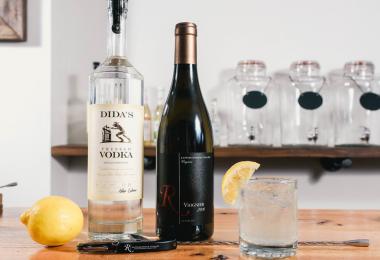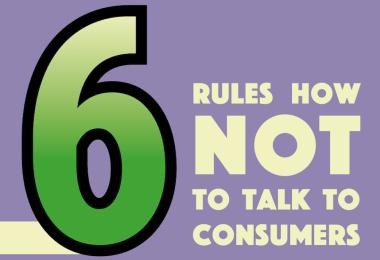In a globalised economy, a clever wine label is clearly a vital part of the marketing mix. Particularly in emerging export markets, where the level of wine knowledge amongst aspirational consumers may be low to non-existent, a well-thought-out label design can mean the difference between success and financial ruin.
Furthermore, Wine Intelligence research shows that the appeal of the bottle and/or label design is significantly more influential amongst regular wine drinkers under the age of 35. With an ever-growing number of brands targeting Millennials worldwide, standing out beyond intrinsic product attributes is now more crucial than ever.
As a result, there have been a number of developments in the design and technological sphere over the past five years. In broad terms, the wine industry has witnessed a massive label diversification, with a move away from the homogeneity of the stately wine label toward a mosaic of different styles, aimed at different consumer groups in distinct markets. This has been most prevalent, ironically enough, in the so-called ‘Old World’.
Labels dominated by trendy typography, lending the brand a retro yet quirky feel, have become more widespread in emerging regions like the Languedoc, for example, often distinguished by the fact that they offer no discernible wine information on the front label at all.
Such labels could just as easily be at home on the front of a craft beer bottle, and are far more image-driven than designs of the past. Their marketing hook is simple yet effective – they scream to be picked up off the shelf, and they entice consumers to photograph and share on social media. On the shelf, they rely on the bottle itself as the sole wine identifier, preferring to keep all wine-related information on the back of the bottle.
Even a segment of the Bordelais wine community is embracing modernism. Château Les Chaumes, for example, worked with graphic designer Lou Dorémus to create a fresh approach for the property’s two cuvees – named L’impertinente and L’exubérante – showing curvaceous outlines of a red-haired woman wearing a strapless dress.
However, at the forefront of this label revolution has been Germany, a nation that is lambasted by the trade for its traditionally complex and often indecipherable wine labels (at least for non-German speakers). Yet a growing firmament of producers are breaking with tradition, replacing sugar classifications and vineyard names with simplified yet innovative labels such as St. Urbans-Hof’s ‘Urban Riesling’ and Leitz’s ‘Eins-Zwei-Dry’, which emphasise the grape variety.
“We now understand that it’s necessary to communicate our wines in a very smart and easy way; nothing’s worse than a complex label,” says Leitz marketing director Jan Schmidt. “It makes a big difference and in fact one of our labels was considered ‘too sexualised’ for the UK market – we’re not allowed to use it in the way it was used in the US.”
Austria has also followed suit, with a growing number of producers realising the necessity of label simplification for English-speaking export markets where village and vineyard classifications mean little to the average consumer. Domaines Kilger is a case in point; this historic winery has replaced its archaic labels with contemporary designs that skilfully mix iconic imagery with useful information.
In addition, product-related descriptions that were once ubiquitous on wine labels are being simplified, replaced with buzzwords and bite-sized pieces of information such as ‘fruity’ and ‘refreshing’. “Wine needs to be marketed in a simple and direct way, especially to Millennials who are an increasingly important consumer group,” agrees Miron Radić, managing director of Liliac winery in Romania. “This is why our entry-level ‘Young Liliac’ range is signposted with simple descriptors on the front of the label like ‘fruity’ for our Sauvignon Blanc. Vineyard, terroir – this is all meaningless information to the Millennial demographic.”
Lulie Halstead, co-founder and CEO of Wine Intelligence, says, “There has definitely been a correlation between the growing emphasis on targeting Millennials – who are generally more open-minded when it comes to labels – and changing the way information is transmitted in contemporary wine marketing.” She continues: “For example, contemporary labels often use imagery to give the consumer an impression of a lighter or heavier wine style, without explicitly stating this fact on the label. So a lighter, fruitier wine style, say a Sauvignon Blanc from Marlborough, may use coastal imagery, whereas a heavy Shiraz from Barossa will use imagery of a mountain, an urban landscape, or a ‘loud’, expressive cartoon motif.”
She adds that this approach is clearly only suitable for certain brands and certain consumers – traditional wine labels are still also very popular, typically using gold font on black labels to transmit messages of prestige and desirability.
Meanwhile, producers in the New World appear to be heading in the opposite direction, emphasising their provenance and terroir with explicit references on labels in an effort to ramp up their perceived value. “New World wine labels are definitely becoming more European,” agrees Christine Parkinson, group head of wine for Hakkasan. “There are more single vineyards and named terroirs, and these are increasingly added to the label.”
Leading Chilean brand Errazuriz is one such advocate of giving consumers more information. Their range of single-vineyard wines makes much of the unique properties of each terroir, with the Errazuriz brand name arguably playing second fiddle to the vineyard descriptors. New Zealand’s Villa Maria also follows suit with their Taylors Pass Sauvignon Blanc, which is today one of their most expensive wines.
“This move by New World producers is clearly an attempt to throw off the ‘good value and fruity’ persona often attached to wines from countries like Chile,” says Ted Sandbach, managing director of the UK’s Oxford Wine Company. “They want to charge premium prices, and they believe highlighting terroir character is one way to justify that. Ironically enough, many winemakers in Europe are heading in the opposite direction.”
Yet for France’s super-premium brands, little seems to have changed. A quick glance over the labels of Cru Classe Bordeaux, Champagne, and prestigious Burgundy reveals few surprises, although Champagne brands are now including information such as the date of disgorgement on their labels.
This is despite several key advances in printing and labelling technologies that have occurred over the past 10 years. According to Halstead, since the mid-2000s, digital printing in particular has evolved rapidly, most recently with new generations of UV- and water-based inkjet printers. As a result, more firms are moving to digital press technologies, utilising the latest laser cutting equipment to enable multiple short-run labelling jobs to be completed in one day.
In addition, the printing industry has now reached a point where it is possible to use inkjet technology to print directly onto glass or plastic bottles, or onto a variety of can shapes and sizes. However, the cost to the brand in question would be significantly higher. “These developments in labelling technologies are important for the printing industry overall, but I see relatively few wine brands being dramatically affected by digital printing in the short term,” says Halstead. “Developments in the design sphere are generally dominating the agenda at the moment.”
However, in recent years, several luxury brands have nonetheless invested considerable sums into modern labelling technologies designed to help fight against the global problem of wine fraud. Château Palmer, for example, now secures all its bottles with Prooftag seals. This authentication technology allows consumers to check the origin of each bottle online.
Relatively expensive to employ, ID and radio tags nonetheless offer a good level of security as they are harder to replicate and require a scanning system to verify that the product is genuine. Therefore they are increasingly being integrated into the labels of premium wine labels, with the widespread use of smart phones making this technology the most viable for brands to use as a protection against fraud in the longer term.
Château Angélus is one such investor in this costly technology, as director Stéphanie de Boüard-Rivoal revealed earlier this year. From the 2014 vintage onwards, each bottle of Angélus will contain an ID chip that when scanned with the appropriate app will reveal the wine’s full technical data, including the composition of the blend. “Angélus wanted to be proactive, rather than reactive in our battle against wine counterfeiting – this is something that has been in the pipeline for some time,” said de Boüard-Rivoal. “As fraudsters have demonstrated, it is relatively straightforward to produce counterfeit labels of fine wines and affix them to bottles. We are confident the chip will make their task a lot harder, although the issue of bottle recycling remains a challenge.”
Of course, because of the significant costs involved, such labelling technologies are likely to remain the preserve of Europe’s fine wine elite. But within this sphere, discussions about labels are likely to be dominated by the issue of fraud prevention as the problem becomes more acute. Fraud expert Maureen Downey suggests that premium brands will increasingly have to invest in concurrent labelling technologies in order to stay ahead of the world’s best fraudsters. “The most effective way of combatting fraud is layering technology,” says Downey. “By layering different technologies, and things like holograms, serial numbers, high-quality paper, ink, and printing processes, recreating bottles becomes more difficult. The main goal of wine producers should be to have too many layers that it becomes too expensive for counterfeiters to try to reproduce.” And, of course, modern digital printing technology makes this all possible.
Or, as Lulie Halstead says, “For mainstream brands competing in crowded retail spaces, contemporary label designs that fit the needs of modern consumers and stand out are likely to be the top priority. But for prestigious brands, having the right label in the coming years will instead be about offering proof of authenticity to your consumer. In a world where over 20% of fine wine in circulation is estimated to be fake, that will be your strongest USP.”








